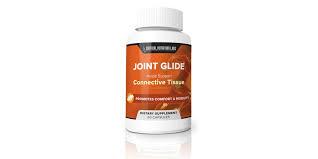
Joint glide refers to the movement of one bone relative to another within a joint, typically involving the sliding of the articular surfaces of the bones along one another. It is a fundamental concept in biomechanics and physical therapy that plays a crucial role in maintaining proper joint function, range of motion, and overall joint health.In simple terms, when one bone moves in relation to another, joint glide refers to how one surface slides along the other, often in a direction that maintains the overall alignment and function of the joint. This motion is crucial because it allows the joint to move smoothly without damage to the cartilage or bones.The role of joint glide is vital for maintaining the health and mobility of the joint. Proper joint glide ensures that the articular cartilage remains intact, preventing wear and tear that could lead to joint degeneration, such as osteoarthritis. When joint glide is restricted or dysfunctional, it can lead to limited range of motion, pain, and the inability to perform certain movementsAdditionally, joint glide plays a significant role in preserving joint congruency—the alignment and fit between the surfaces of the bones involved in the joint. When glide is restricted or misdirected, the bones may not align properly, leading to inefficient movement and potential injury.In rehabilitation and physical therapy, joint glide is an essential concept when addressing joint mobility issues. Joint mobilization techniques, such as oscillatory or sustained gliding movements, are used to restore proper glide, improve range of motion, reduce pain, and restore function to injured joints. For example, if a joint has become stiff following an injury or surgery, a physical therapist might use specific joint mobilizations to reintroduce normal glide to the joint surfacesThe gliding motion helps distribute the synovial fluid within the joint, nourishing the cartilage and reducing friction. Synovial fluid serves as a lubricant and shock absorber, and proper joint glide is essential for the even distribution of this fluid, promoting cartilage health and preventing degeneration.In clinical settings, joint glide is often assessed through manual techniques or imaging to understand the joint’s movement capabilities. Physical therapists, osteopaths, and chiropractors may perform passive range-of-motion assessments to detect limitations in glide. They may apply specific mobilizations to assess the glide and make therapeutic adjustments accordingly.Joint glide is an essential aspect of joint function and movement. Its proper execution ensures smooth, efficient joint motion while maintaining the integrity of cartilage and joint surfaces. Whether in a healthy, functioning joint or during rehabilitation, understanding joint glide is crucial for diagnosing and treating joint dysfunctions, restoring movement, and preventing long-term joint damage.Joint glide, also known as arthrokinematic motion, refers to the small, typically linear movements that occur at the articulating surfaces of bones in a joint during motion. Unlike the large, visible movements that are seen when joints flex or extend (known as osteokinematic motion), joint glide involves the sliding or gliding of one joint surface along another. These movements are crucial for smooth, pain-free joint function and play a key role in maintaining joint health, especially in weight-bearing or high-mobility areas like the knees, hips, shoulders, and wrists.At a fundamental level, joint glide is driven by the complex interaction between the articular surfaces of bones and the surrounding soft tissues, such as ligaments, tendons, and muscles. When a joint moves, the bones do not just rotate or move in simple arcs; there are subtle gliding motions between the surfaces of the bones to allow for more efficient and smooth motion. These gliding movements, although not always visible to the naked eye, are essential for achieving the desired range of motion without friction, wear, or damage to the bone surfaces.The glide helps minimize direct friction between the articulating surfaces of the bones. In the absence of glide, friction could cause wear on the cartilage and other tissues, leading to pain.https://joint-glide.com/
Is CBD Care Skin Cream safe for sensitive skin?
Publicado Por : Heat Well on Jan 14 , 25 11:06 AMHow does Derma Clear V2 improve skin clarity?
Publicado Por : Care Cream on Jan 14 , 25 10:06 AMHow long is the warranty period for HeatWell heaters?
Publicado Por : Care Cream on Jan 14 , 25 06:49 AM
